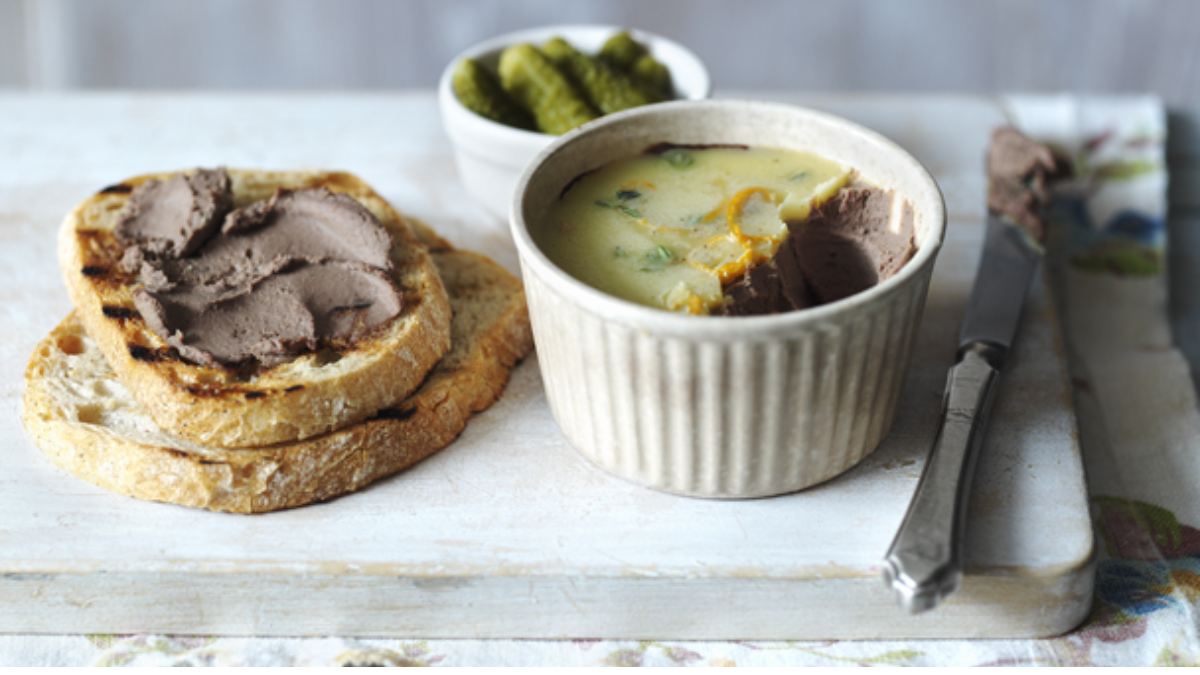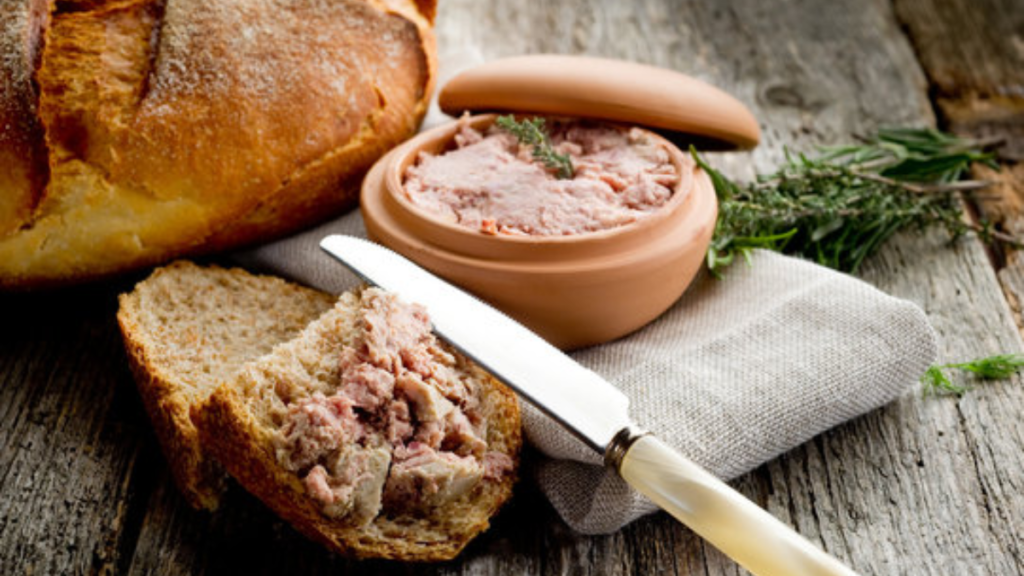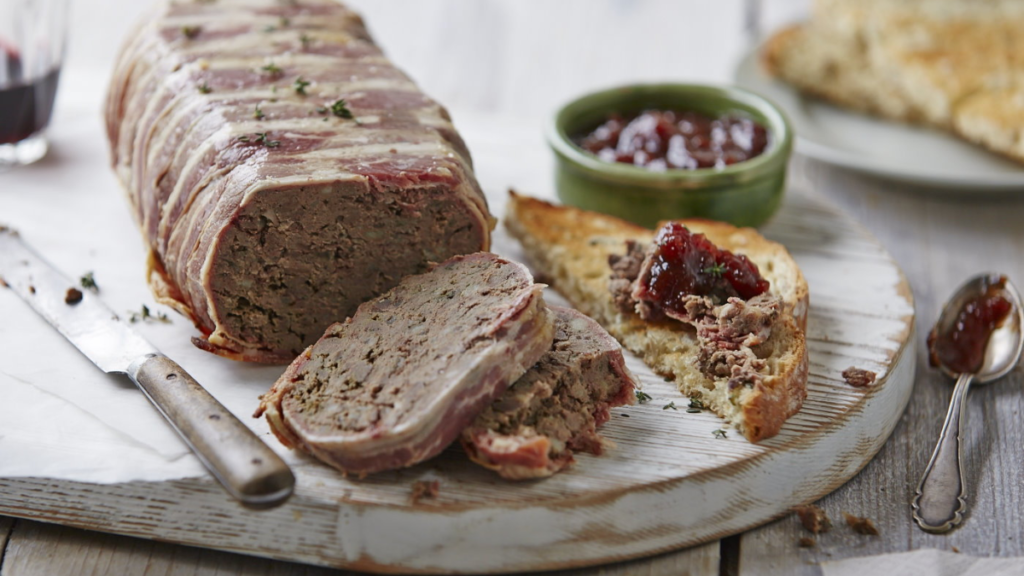Learn how to make duck liver recipes using duck or other methods. Duck livers are typically associated with velvety smooth pâté, which is sometimes combined with abundant and expensive foie gras. Duck livers are much less expensive than their force-fed counterparts and are quick to cook, tasty, and animal friendly. If you’ve learned how to cook for a party, you’ll soon realize that you’ll need to provide additional options. Even though duck liver recipes are top-rated, many people refuse to eat any liver.
Foie gras is often described as tasting like meat-flavored butter. Despite its rich buttery flavor, foie gras has a delicate texture. Foie gras is a multisensory experience that floods your gustatory and tactile senses.
The buttery sensation in your mouth comes from the high-fat content of foie gras, and the texture is similar to that of butter and whipped cream. Foie gras has a strong umami flavor and holds the tension of opposites. The fifth taste, along with bitter, salty, sweet, and tart, is umami, a Japanese term for meatiness.
Duck Liver Nutrition Facts
What is Exactly Duck Liver?
Foie gras, or fatty duck or goose liver, is a famous French delicacy worldwide. Pâté de foie gras, a smooth spread made from foie gras and white wine, is frequently confused. On the other hand, the term “foie gras” refers to the whole, intact liver. Foie gras has a silky texture and a meaty buttery flavor. It comes in various forms, but the most common is as a pâté with bread or crackers. Foie gras is nutrient-dense, with many vitamins and minerals, but it’s also pricey. Its production is contentious, with many people believing it is cruel to ducks and geese.
How to Make Duck Liver Pate?
Foie gras is most commonly eaten as a pâté with crackers, crusty bread, or sliced and pan-seared. Although you can easily purchase premade pâté de foie gras from many retailers, it’s also possible to make it yourself.
Here’s a simple recipe for pâté de foie gras using only four ingredients. You’ll need:
Ingredients
- 1 1/2 pounds (680 grams) of raw foie gras
- 1/3 cup (80 ml) of white wine
- Salt and Pepper
Steps
- Preheat the oven to 215°F (100°C).
- Separate the foie gras into two lobes by cutting it down the midline. Cut off any red spots or veins that you see.
- Sprinkle both pieces with salt and pepper, place them in a baking dish, and pour the wine over them.
- Create a water bath for the dish by placing it in a larger baking pan and filling the larger baking pan about halfway with water.
- Bake for 40 minutes.
- Remove the melted duck fat and save it for a later step.
- Cover the foie gras with foil, then weigh it down in the pan for 30 minutes using heavy canned goods or a cast-iron pan.
- Refrigerate the covered foie gras and duck fat for 24 hours.
- Melt the duck fat and pour it over the top of the foie gras. Cover it again and refrigerate it for 48 hours before serving.
How it’s Made and Used?
Force-feeding a special diet to ducks and geese is an essential part of foie gras production.
The diet is high in fattening corn, causing the birds to gain weight quickly and accumulate fat on and around their livers.
Because the livers of ducks and geese that haven’t gone through the fattening process aren’t as fatty or smooth, foie gras is considered a delicacy. Force-feeding causes the birds’ livers to grow up to ten times larger. Raw, semi-cooked, fully cooked, whole, or in sections, foie gras, is available.
It’s an essential component of French cuisine. Popular dishes include roasted, pan-fried, and grilled foie gras, but most people are more familiar with pâté de foie gras, typically served with a baguette or crackers.
Variations in Taste and Texture
As you can see from the wide variety of cooking and serving methods, the flavor and the texture of foie gras can vary greatly depending on the preparation.
Duck and Goose
The flavor and texture will differ depending on whether you’re eating duck or goose foie gras. The duck foie gras has a lower fat content and a more robust flavor, whereas the goose foie gras has a milder but more refined flavor and a higher fat content. Outside of France, finding goose foie gras is difficult; most foie gras available in Europe and the United States comes from the duck.
Cooking Method
Searing, sautéing, or frying foie gras changes the texture and flavor. These cooking techniques produce foie gras that tastes and feels like the fatty part of a steak. If you try these cooking methods at home, keep in mind that because of the high-fat content of foie gras, it won’t take much to melt the expensive foie gras.
Starter or Main
Foie gras is occasionally served as a main course, but it is more frequently served as an appetizer. It’s sometimes a luxurious steak addition, adding velvety richness to the meaty richness. Because foie gras has a distinct flavor, surrounding it with muted flavors elevates and highlights it.
Pairings
Foie gras goes well with bread, toast, or baguette. Foie gras can also be served with dried fruit, jam, or grapes as an accompaniment. It also goes well with salad, as long as the dressing doesn’t have too much vinegar or bitterness; foie gras requires a mild partner so that it can shine. Choose a sweet wine, a bottle of lovely champagne, or a complex and fruity red wine as a wine pairing. A bitter wine or one that is too light should be avoided, just like the salad. A complex partner is required for a special treat like foie gras.
Pâté or Not to Pâté
Pâté is a broad term that refers to a dish made up of various ingredients, one of which is usually some liver. It isn’t always made with foie gras, though. In fact, in French, pâté means paste. Pâté preparations have recently expanded to include vegetables, seafood, and herbs, and Foie gras could be used to make a pâté. To be called pâté de foie gras, a pâté must contain at least 50% foie gras.
What are the Health Benefits of Duck Liver?
Vitamin B12, vitamin A, copper, and iron are abundant in foie gras. It’s also high in fat and calories. On the other hand, fat is a healthy mix of unsaturated and saturated fat. The majority of fat in foie gras is monounsaturated fat, which is anti-inflammatory and may lower your risk of heart disease. Olive oil is another good source of monounsaturated fat.
Furthermore, the saturated fat in this food isn’t as harmful as previously thought. According to current research, foods high in saturated fat can be part of a balanced diet. It’s also filling due to its high-fat content. This could assist you in controlling your intake, which is essential to consider given the high-calorie content.
Drawbacks
Foie gras is expensive due to its unique production methods and status as a delicacy. Furthermore, many places have outlawed it because forcing birds to enlarge their livers is considered cruel.
For example, in October 2019, New York City passed legislation prohibiting food from entering the city until 2022. In California, traditional foie gras is also prohibited. However, because force-feeding is an essential part of French culinary culture, it is protected in France. Some foie gras producers, thankfully, have adopted non-force-feeding techniques. If you decide to eat foie gras, don’t consume too much in one sitting. Because it’s rich and high in fat, overeating could upset your stomach.
Furthermore, only heat-sterilized, canned foie gras should be consumed by pregnant women and people with compromised immune systems. Because it’s prepared at low temperatures, homemade or fresh foie gras has a higher risk of bacterial contamination.
Conclusion
In French cuisine, foie gras, or fatty duck or goose liver, is a staple. It’s usually served with crackers or bread as a pâté. It’s high in fat and calories but high in vitamins like B12, A, copper, and iron. It’s also high in monounsaturated fat, which is anti-inflammatory. However, its production methods are contentious, leading to food bans in some areas. It’s also quite costly. Foie gras is a healthy delicacy, though it is high in calories if you choose to eat it.



